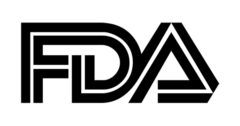
On January 4, 2016, FDA released draft guidance for its Convenience Kit exemption, offering orthopaedic device manufacturers more direction on the labeling of device trays and kits with unique identifiers (UDIs). The proposed change would clarify the definition of convenience kit, reducing the number of accepted exemptions and requiring more individual devices to be marked with UDIs. Industry has 90 days to comment on the proposed draft guidance.
Currently, devices packaged within a convenience kit do not require individual UDIs, as long as a UDI is present on the kit container. That could change for certain kits. In this draft, FDA has shifted the definition of convenience kit so that the exemption “applies solely to two or more different medical devices packaged together for the convenience of the user where they are intended to remain packaged together and not replaced, substituted, repackaged, sterilized, or otherwise processed or modified before the devices are used by an end user.”
The Agency outlined its thinking, noting that some kits contain hundreds of implants and reusable instruments on numerous trays, configured specifically to the requirements of the surgeon and individual surgical procedure. Only a few of the implants may be selected for implantation, and the kits will subsequently be replenished with new implants. The remaining implants, replacement implants and reusable devices will be sterilized and reconfigured for additional use. FDA adds that an individual implant may undergo the sterilization and reconfiguration process several times before it is used. Therefore, these implants and instruments do not meet the definition of convenience kit and must continue to individually meet UDI labeling and data submission requirements.
The draft guidance then provides examples of what would and would not qualify as a convenience kit after the proposed rule shift. Specifically, it notes that a non-sterile orthopaedic device tray or set would not be a convenience kit. FDA states that, because the implants and devices contained within are not meant to remain packaged together, that kit cannot qualify for the exemption. However, an ACL disposable kit would be considered a convenience kit because the contents are used for a single procedure and then disposed.
To read the full document, click here.
To provide comments to FDA on the draft guidance, click here.




